Home in seventh
Andy Meiklejohn (NZL) and Wouter Verbraak (NED) on Hugo Boss crossed the finish line off the W Hotel during the very early hours of a breezy Barcelona night, at 00:49:23 local time (22:49:23 GMT Thursday) to secure seventh place overall in the Barcelona World Race.
Verbraak said: “It is great to be back. It has been a while. I was meant to step off at the Cape Verde Islands but I had to make the phone call home and say I was going to be 90 days late. So now here we are, it has been a fantastic challenge and I have to thank Andy for letting me in and teaching me a few tricks in the Med before we got out into the Atlantic, it was an amazing trip. We could not have done it without the support of our team.”
Hugo Boss' elapsed time for the 25,200 miles course is 111 days 10 hours 49 mins computed to have sailed at a theoretical average of 9,42 knots.
Hugo Boss sailed 29.246 actual miles at an average speed of 10.93 knots.
For the Kiwi-Dutch duo, who were only teamed up 24 hours before the start with Verbraak as substitute for Alex Thomson who needed immediate surgery on his appendix with two days to the race start, their result came having never sailed alone before on what is viewed as the IMOCA 60 fleet’s most powerful boat. They struggled out of the Mediterranean and by the Canary Islands were in 14th place more than 650 miles behind the leaders.
Verbraak expected to get off Hugo Boss at the Cape Verdes to be replaced by Thomson, but the British skipper had to stay home to be with his new born son, after he was diagnosed with a heart problem. And so 100 days later than he should have been, the Dutch co-skipper was finally reunited with his family on the blustery dockside in Barcelona, while Meiklejohn was reunited with his five months pregnant wife.
The duo stuck to their strategy, learning the boat and gelling as a crew, but just when they we were getting into the race at the entry to the Southern Ocean a major repair, which left them sailing without a mainsail for four days, effectively saw them lose touch completely with the leading boats, dropping more than 1000 miles to the leaders as a high pressure ridge compounded their losses.
And finally having fought their way up to seventh, they had to stop in the Falkland Islands to make essential sail repairs which cost them another eight days.
The Race of Hugo Boss
Cruelly for Alex Thomson (GBR), his second challenge to win the Barcelona World Race was over before it started. Admitted for surgery to remove his appendix less than 48 hours before the start gun, substitute skipper Wouter Verbraak (NED) had to step into Thomson’s shoes at the 11th hour.
When he took to the start line alongside Andy Meiklejohn (NZL) - who had prepared for the best part of a year with Thomson and was looking to better Thomson’s second place in 2007-8 and had sailed more than 15,000 training miles on the boat - Verbraak had only previously been on board the powerful IMOCA Open 60 for two hours. Of that time only 15 minutes had been spent on deck.
For the duo, who had sailed many times before in the past on various maxi and offshore programmes, the learning curve on Hugo Boss was extremely steep. And the combination of their inexperience together, the powerful boat which is design optimised for strong winds and reaching conditions (they did not know how best to set up the autopilots, according to Thomson) and the light winds down the Mediterranean to Gibraltar really exacerbated their weaknesses. While the leaders sprinted away the duo were still taking babysteps together: five days after the start they were in 14th, 345 miles behind the leading boat and struggling to get clear of the Mediterranean.
“Recent days have been frustrating and a mix of emotions,” reported Verbraak, who had had to say goodbye to his wife Kristine and six year old son, for what were expected to be just 10-12 days.
Four days later Thomson was declared medically fit to race after tests in the UK and a plan to have him join the boat in the Cabo Verde Islands was accepted. But the changeover never happened.
Thomson’s baby son, who was only born on 7 January, was diagnosed with a heart problem, and the British skipper stayed home to be with his son and partner Kate. It was something of a shock for trained meteorologist Verbraak, a weather router, navigator who had sailed sections of the last Volvo Ocean Race on Team Russia and Team Delta Lloyd, but who had been hand picked because his meteo and nav skills complemented Meiklejohn’s hands-on speed and all round skills.
And Verbraak had to call home and say that he did not now expect to be back for at least another 70 days.
“It really has been 24 hours of conflicting emotions. On the one hand we are both very pleased the decision has been taken and the uncertainty that has been hanging over us is removed, and we are happy to continue together. But on the other hand we know that Alex is having a tough time at home and our thoughts really are with him. We hope everything works out for him and our objective is to finish," said Meiklejohn at the time.
Verbraak revealed that so sudden was his substitution that he had to wear Thomson’s sailing gear on board - at least a size too big! But progressively they fought back. A rearguard action, saw them initially tussling with Central Lechera Asturiana and FMC past the Canary Islands, 655 miles behind the leaders, and at the Cabo Verdes.
On 17 January they were the fastest in the fleet and then with Central Lechera Asturiana stopping in Cape Town and the retirement of Foncia, so Hugo Boss edged up to ninth.
After making mainsail repairs, resulting in them having no mainsail for four days, they rolled into great spell, sending their Juan Kouyoumdjian design close to the speeds expected of it. Fastest of the fleet at times again they hunted down Dee Caffari and Anna Corbella on GAES Centros Auditivos, the start of an IMOCA 60 match race that would continue on to Cape Horn.
The high ice gates enforce a high percentage of upwind sailing early on in the Indian Ocean, but thereafter Hugo Boss gradually reeled in GAES Centros Auditivos and Meiklejohn and Verbraak passed the female duo on 11 February, moving up to eighth place.
Both boats were quick on the approach to and to the south of Australia, making fast, direct miles, but on 16 February they confirmed that they had been missing 1.5m from the top of their mainsail mast track since 28 January. They passed very close to the south of Tasmania seeking a solution, but opted to press on past Wellington in eighth place.
Passing through Cook Strait, for the Barcelona World Race’s only New Zealander, Andy Meiklejohn felt with differing and difficult emotions immediately following the devastating earthquake in Christchurch.
After passing an area where Meiklejohn’s mother had grown up, there was the triumph of sailing past Wellington and choosing not to stop, of rendez-vousing with Alex Thomson and Operations Manager Ross Daniel, but also the Kiwi admitted to a feeling of raw helplessness, being at sea when part of his home country was in trauma and he was so close to them.
No sooner had Hugo Boss emerged from the passage between New Zealand’s North and South Islands than Meiklejohn and Verbraak had to deal with the down-graded tropical cyclone Atu. Their southerly routing took them through some tough conditions, big unruly, disorganised seas and 50-60 knot winds.
The remainder of the Pacific was a mix of strong, fast sailing but with extremely limited outside contact with the world. An electrical charging issue left them running on absolutely minimum power. Different innovative solutions for the faulty fresh water pump even saw their technical team mock up different plumbing ideas at their Gosport, England base to try and present them with a fix.
Their passage of Cape Horn was marked by the deterioration of their sails, a difficult mix of weather conditions and an approach from the south which saw them losing hard won miles to GAES Centros Auditivos. Over 11-12 March they passed Cape Horn locked together in a mini-match race, only 1.5 miles apart, the two boats which are usually berthed in Gosport reunited at the most rugged outpost of round the world racing.
But one day later Meiklejohn and Verbraak had to make the decision which was to end their ascent of the leaderboard. Because of the decay of several key sails, not least their mainsail, the duo decided to stop in the Falkland Islands. At first their determination was to make the stop as short as possible and unaided, so as not to incur the 48 hours minimum duration. So they anchored in Adventure Bay in the south of East Falklands Island and set to work over 13-15 March in a soul destroying non-stop 36 hours marathon trying to repair the sails themselves. But it became clear that the magnitude and technical requirements were beyond their resources, and so they left and headed to Stanley, the Islands’ capital. Having called for help from Doyle Sails New Zealand’s representatives Hugo Boss was halted from 16-21 March.
After a stopover which through costly in time and distance proved memorable for the warmth of the Islanders’ hospitality and their willingness to help, eighth placed Forum Maritim Catala had caught up from being around 2,100 miles behind before the first stop, to being just 120 miles astern.
Up the Atlantic the pleasure at having a boat ‘at close to 99%’ sustains Meiklejohn and Verbraak for many days, especially in the fast reaching conditions up the South American continent when they reel miles away from their pursuers. The north Atlantic offers them few strategic options after they cross the Equator on the same day that Virbac-Paprec 3 finished. Upwind for 3000 miles on starboard tack the duo ruminated over endless cups of afternoon tea. Unfortunate timing, for the Hugo Boss duo, saw FMC slash the lead of the British black and white boat as they rode a low pressure system for five days and at Gibraltar there was just 140 miles between seventh and eighth.
But the duo’s incredible adventure ends with a highly creditable seventh place, half way up the fleet of 14 starters, a very commendable result for a duo thrown together at the last minute and which were resolutely last for the first weeks of the race.
Wouter Verbraak "It is great to be back. It has been a while. I was meant to step off at the Cape Verde Islands but I had to make the phone call home and say I was going to be 90 days late. So now here we are, it has been a fantastic challenge and I have to thank Andy for letting me in and teaching me a few tricks in the Med before we got out into the Atlantic, it was an amazing trip. We could not have done it without the support of our team.”
Andy Meiklejohn (NZL): It was not easy at the start in the Mediterranean. We were hoping for some light winds to learn the boat but that was a bit extreme. We would have liked to get going and be a bit more competitive, but we worked our way up through the fleet, and there were a lot of challenges after that and I think we dealt with all of those challenges. For both of the first goal was to get around the world and that was what drove us. We wanted to finish the race. We wanted to finish it non stop. And that is why when stopped in the Falklands we tried to fix everything ourselves, that was about the first goal. And then after that it was to just finish the race. Every boat faces challenges and we were no exception.
Wouter Verbraak (NED): “This was a great personal journey, you get to use all of your skills as well as all that the weather and the sea can throw at you. So it is a big character building thing. We have been great as a team. That has struck me, of you want to face these challenges it is better to do it as a team, as two, than alone."
Wouter Verbraak (NED) Hugo Boss: “It was an amazing challenge, without doubt the toughest racing I have done physically and mentally, and what it boiled down to was team work. You cannot do this by yourself. It is much better to be two. It was a great race with Andy.
"The race is a really all about managing the ups and downs, like life. Our tough moments were when we really could not race the boat as hard as we wanted to. When we had to stop in the Falklands was a really tough time for us, because our goal was always to make this a non stop race. By Doyle Sails sailmakers came in, fixed up the sails, and the goal after that was really to sail the boat really well to the end and we did that.
"The best moment for us was really rounding Cape Horn. After such a tough time in the Southern Ocean and breaking sails, to turn the corner and know we were going back home to our families was an amazing moment. And now, here we are back with our families.
“With the mainsail breaking like it did and being a real race stopper, very early and in a key moment of the race, we were really happy after a while that we had managed to do the repair with virtually no materials on the boat, we had to be very, very creative, things which had not been done before and it is now the strongest part of the mainsail. It never caused any problems, and that shows if you think well you don’t just fix things but you improve things. That was before Cape of Good Hope, and so to sail in the south with a repair like that is an amazing thing on its own. The generator repair just proved how you have to be on top of these things. If you don’t have energy you are out of the race. We had to work really hard to fix that and continue racing, and Andy did an outstanding job there. We managed it.
“As a navigator I was a real specialist before. Now having done this I have seen a lot of other sides of myself as a sailor. It took me back to my dinghy sailing days, just the pleasure or tuning a boat perfectly and steering down those big waves in the Southern Ocean, so it is definitely something I am keen to do more of, and mainly to use more of the overall big picture that you get sailing these boats double handed. And so absolutely it was also be great to do this with a full crew."
Andy Meiklejohn (NZL): "The Southern Ocean is what you do these things for. It took us a bit longer than we hoped for to get there. But it was exciting, it was exhilarating. It was great sailing. The second half of it we were behind a system and that made for some cold, windy sailing, big seas, ice on the rig, ice on the deck, snowstorms. Those are the stories which you come back with which you don’t get anywhere else. That is probably the highlight, the tough times in the south.
"The big goal really was to learn about the boat for the Vendée Globe and that was Alex’s goal from the beginning. And that was what I was there for and as a team we have worked through this problem. It is a very physical boat to sail and now we have some ideas how to make it easier, and making the boat even faster."
And highlights from the race:
Announced as substitute skipperWouter Verbraak, said: “The Barcelona World Race was a goal of mine, so I’m looking forward to this amazing opportunity to sail with long-time friend Andy Meiklejohn as Alex’s substitute until he can join the race.
“The Hugo Boss yacht is great to sail and Andy and I compliment each other well on board. The preparation for the race by the team has been amazing so we’re well equipped for the task ahead.”
Andy Meiklejohn, after the start: “It has been a tough week with Alex’s sudden illness, but having Wouter as the substitute skipper is the best possible solution to the situation. Having sailed together before we have a strong bond, which will help us overcome the initial challenge. We’re fully focused on the task ahead and look forward to Alex stepping on board the Hugo Boss boat as soon as he’s fit to sail.”
Wouter Verbraak....on team spirit evident after 48 hours racing
“We have been good at cheering each other up. This is a team game and you have to make use of your partner. I think one thing in this race just now is to remind each other of the extreme length of the race.
"This boat was designed, built and developed to reach its potential in reaching in stronger winds in the major types of weather systems all around the globe. We always knew this is the light winds part of the race and the boat is not liking it, so we remind each other of that and keep the course distance clear in our heads, that is very important.
"There is not much positive about being behind. But the tradewinds south of the Canaries are well established and we have options there and from Gibraltar to the Canaries there are two options.
"The first 48 hours were tough. There were a lot of corners, changes and transitions. And then the last one and a half days have been hand steering, now we are trucking under pilot, so the routine is to make sure everything is ready for the stronger winds outside.

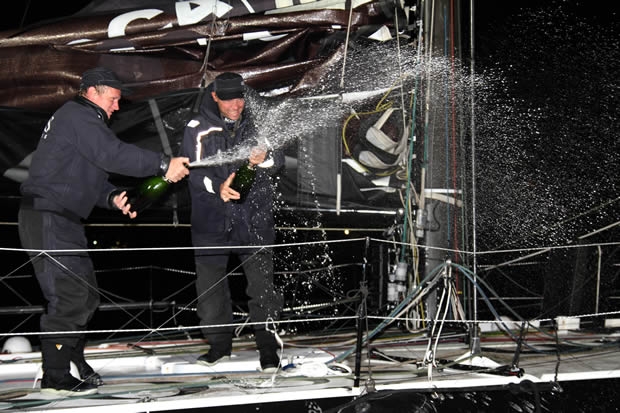
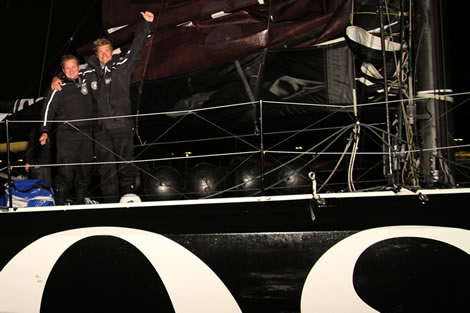
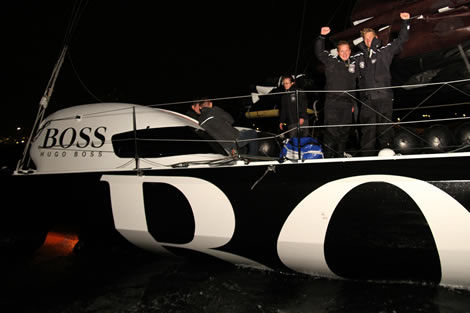
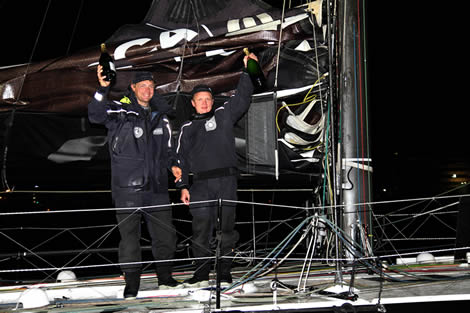
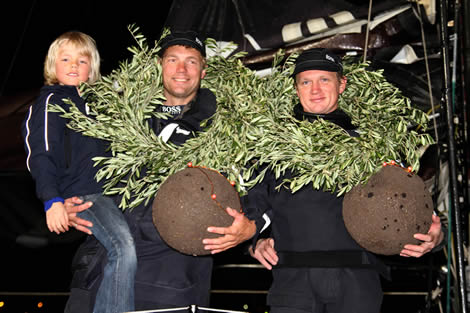
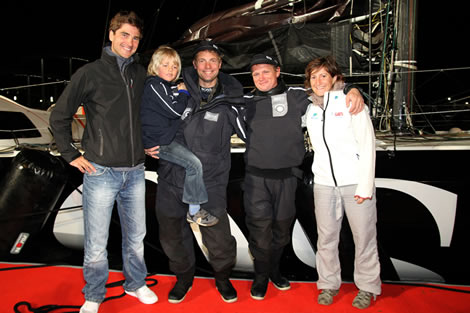









Latest Comments
Add a comment - Members log in